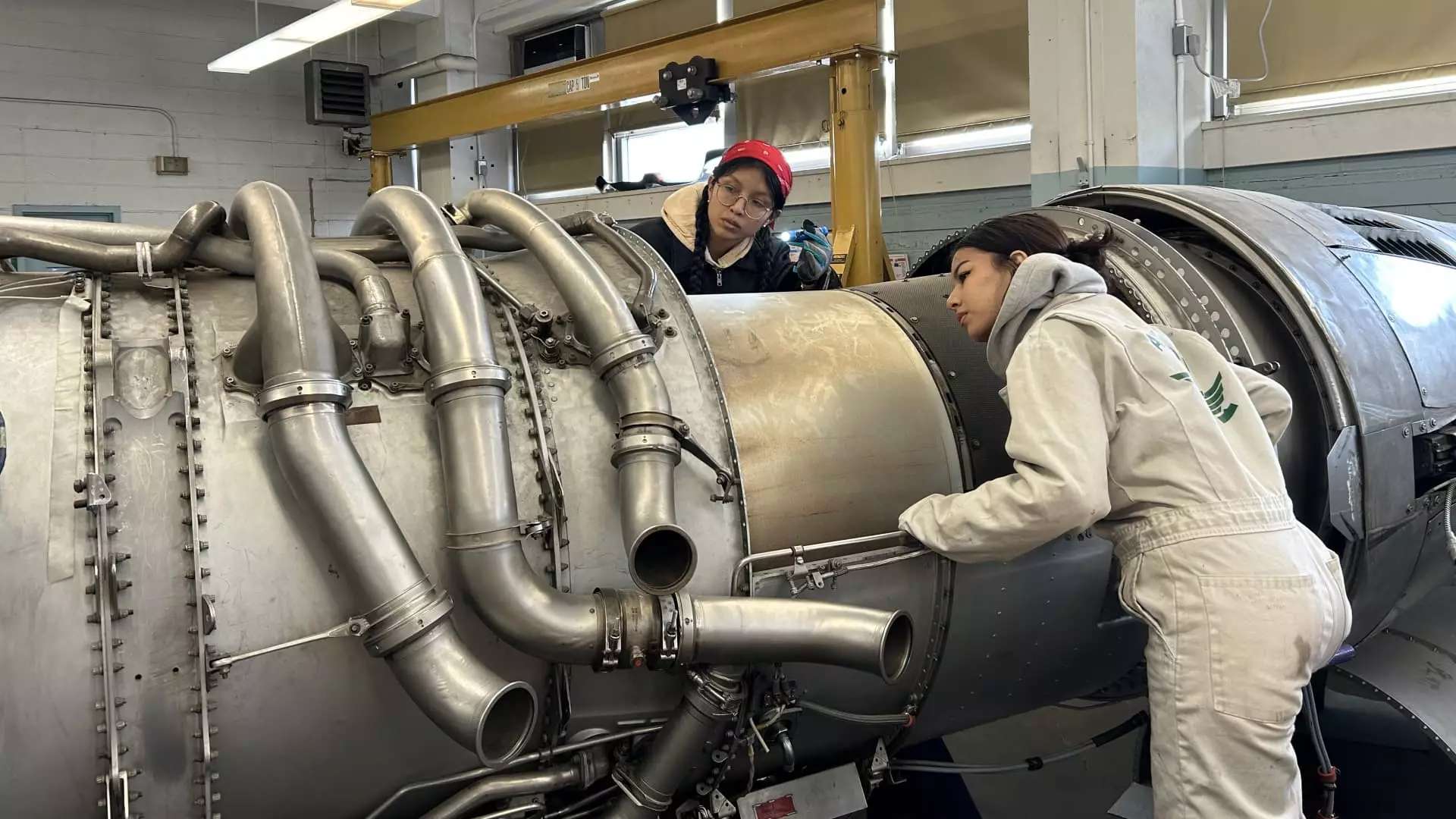As the United States aims to bolster its manufacturing base and energize the technical job market, an alarming reality looms over the aviation sector. President Trump has made lofty promises about creating jobs in manufacturing, yet the aviation industry stands on the precipice of a worker crisis. The average age of a certified aircraft mechanic today is a staggering 54, with 40% of them nearing retirement age. According to a recent joint report by the Aviation Technician Education Council and Oliver Wyman, America will face a shortfall of 25,000 aircraft technicians by 2028. This isn’t merely a statistic; it reflects a looming workforce crisis that could have far-reaching implications for safety and the economy.
The aviation industry is often framed in glowing terms as a beacon of American ingenuity and economic power. However, the internal workforce challenges tell a different story. While we are eager to celebrate the technology that enables our flights, we must recognize the increasingly urgent need to invest in the workforce that enables it—specifically, skilled technicians capable of maintaining and repairing complex aircraft systems.
Past Mistakes and Future Implications
The aviation workforce was already in decline even before the COVID-19 pandemic. Companies, in their frantic attempt to cut costs during the crisis, offered buyouts to experienced workers, resulting in a significant loss of talent. The sector risks repeating the mistakes of the past—essentially rolling the dice on an aging workforce, rather than strategically investing in new talent to bridge these inevitable gaps. As industry leaders like David Seymour from American Airlines note, the situation is critical; once older workers retire, there isn’t an adequately prepared workforce to take their place.
Moreover, as the country races toward economic recovery, the ramifications of a technician shortage affect more than just the airlines. They touch the entire aviation ecosystem—from manufacturers like Boeing and GE to the smaller supply companies that rely on a skilled workforce to sustain operations. As the multiplier effect echoes through the market, we can’t afford to overlook the comprehensive ramifications of this looming crisis.
Financial Incentives Are Not Enough
It’s evident that raising wages should not be the only solution to attract younger technicians. While the median pay for aircraft mechanics stands at a competitive $79,140, nearly $30,000 more than the national average income, this alone does not paint a holistic picture. Factors such as work hours, job stability, and the quality of training programs need an overhaul to attract youth who might otherwise opt for tech jobs in other industries. Sarah MacLeod of the Aeronautical Repair Station Association asserts that we need to increase wages, but there’s a larger conversation to be had. The barriers to entry into this industry can be dissuasive; earning a Federal Aviation Administration (FAA) license requires serious commitment and often extensive training.
Organizations must innovate their recruitment strategies, moving beyond conventional methods. Prospective technicians will increasingly be looking to combine education with practical experience, valuing apprenticeships or hybrid programs. Why not redesign educational frameworks that encourage work experience, as seen in programs at Aviation High School in Queens? This model not only teaches students hands-on skills but also paves the way for them to enter the workforce directly, fostering a new generation of technically skilled professionals.
Engaging the Next Generation
Rethinking the recruitment process must start young. Not only should high schools engage students interested in aviation but middle schools should also be brought into the arena. It’s time for schools to shift the public perception of the aviation industry from antiquated and laborious to sleek and modern, offering high-tech career paths that are appealing to today’s youth. By collaborating with educational institutions, companies can forge relationships that fill job vacancies with qualified candidates who are both knowledgeable and enthusiastic.
As noted by GE’s Meisner, the narrative around manufacturing careers needs to change. The future doesn’t lie in traditional fabrication alone; it also encompasses everything from advanced machinery that requires specialized skill sets to new technologies like robotics and precision engineering. Highlighting these components can shift the perspective for younger generations and entice them into fields previously deemed unappealing.
Looking Beyond Manufacturing Fetishism
We must reject the partially myopic cultural fetishization of manufacturing jobs. Manufacturing accounts for only about 9% of U.S. employment and focusing excessively on it can detract from other significant sectors that also need attention. Yes, manufacturing jobs matter deeply, but equally critical are the support jobs—like those in air traffic control—which are also facing severe shortages. As the economy recovers and demand for air travel rises, we need to recognize the complexity of our workforce ecosystem.
A strategic, multipronged approach is essential. Policies that foster labor mobility, vocational education reform, and stronger partnerships between industry and schools could all be key in addressing this critical workforce crisis. If America is to retain its stature as an aviation powerhouse, it must act decisively now, lest we be left scrambling while the ground beneath us gives way.

